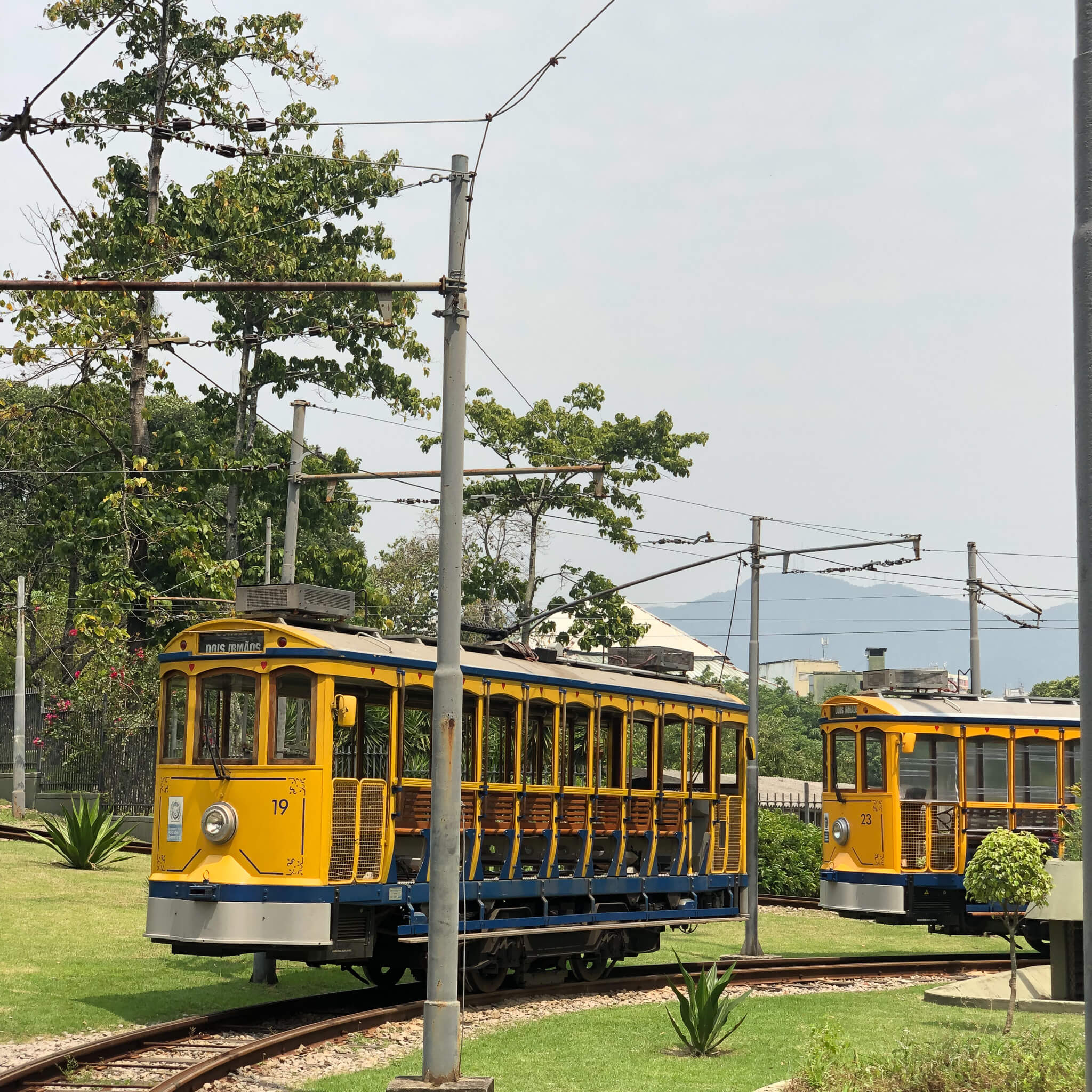Rio de Janeiro, a vibrant city in Brazil, captivates travelers with its stunning beaches, iconic landmarks, and lively culture. If you are planning a visit, SIXT.VN can help you navigate this exciting destination with ease, offering personalized travel advice and convenient booking options. Let’s explore what makes tourism in Rio de Janeiro so special and how to make the most of your trip, ensuring memorable experiences.
1. Why is Tourism Rio De Janeiro Popular?
Tourism in Rio de Janeiro is popular due to its beautiful beaches, iconic landmarks, and vibrant cultural scene. According to a 2023 report by the Brazilian Tourism Institute (Embratur), Rio de Janeiro is among the top destinations in South America, attracting millions of visitors annually. This popularity stems from a mix of natural beauty and rich cultural experiences that the city offers.
- Beaches: Copacabana and Ipanema are world-famous beaches that provide a quintessential Rio experience with sunbathing, water sports, and beachside vendors.
- Iconic Landmarks: Christ the Redeemer and Sugarloaf Mountain offer breathtaking views and are must-see attractions.
- Cultural Vibrancy: The city’s vibrant culture is showcased through its music, dance, and festivals like Carnival.
- Accessibility: The city boasts excellent connectivity with two major airports, facilitating smooth travel experiences for international visitors.
- Diverse Activities: Whether it’s hiking in Tijuca National Park or exploring historical sites, Rio provides a wide range of activities suitable for different interests.
- Vibrant Nightlife: Rio’s nightlife, especially in areas like Lapa, offers a mix of samba clubs, bars, and street parties.
- Culinary Scene: From street food to upscale dining, the city’s diverse culinary scene appeals to various tastes and budgets.
- Year-Round Appeal: With a tropical climate, Rio is a year-round destination, each season providing unique experiences.
 Copacabana beach in Rio de Janeiro on a sunny day
Copacabana beach in Rio de Janeiro on a sunny day
2. What is the Best Time to Visit Rio De Janeiro for Tourism?
The best time for tourism in Rio de Janeiro is during the shoulder seasons: April to May and September to October. These months offer pleasant weather with fewer crowds. According to climate data, these periods avoid the extreme heat and humidity of summer (December to February) and the occasional cooler spells of winter (June to August).
- April to May: The weather is warm and sunny, ideal for beach activities, and the city is less crowded compared to the summer months.
- September to October: Similar to April-May, these months provide comfortable temperatures for sightseeing and outdoor activities.
- Carnival (February or March): While it’s the peak tourist season, Carnival offers an unparalleled cultural experience with vibrant parades and parties.
- Summer (December to February): Expect high temperatures and humidity, which can be challenging for some travelers, but the beaches are at their liveliest.
- Winter (June to August): Temperatures are mild, but it can be rainy. It’s a good time for indoor activities and exploring museums.
- Avoid Peak Crowds: Plan your trip outside major holidays and events to avoid inflated prices and crowded attractions.
- Weather Considerations: Check the weather forecast before your trip and pack accordingly.
- Event Calendar: Consider aligning your visit with local festivals and events for a richer cultural experience.
3. How to Travel Around Rio De Janeiro as a Tourist?
Navigating Rio de Janeiro as a tourist is convenient with various transportation options available. The city offers a mix of public transport, ride-sharing services, and walking routes to explore its attractions. Choosing the right mode of transport can enhance your travel experience and make it more efficient.
- Metro: The Rio Metro is reliable, safe, and cost-effective, connecting major tourist areas. According to the Rio Metro official website, it transports over 800,000 passengers daily, making it a popular choice.
- Buses: An extensive bus network covers most parts of the city, though it can be crowded and confusing for first-time visitors.
- Uber/Taxis: Ride-sharing services like Uber and taxis are readily available and offer a comfortable way to get around, especially at night.
- Bike Rentals: Renting a bike is a great way to explore coastal areas like Copacabana and Ipanema. Bike Rio offers bike-sharing services throughout the city.
- Walking: Walking is ideal for exploring neighborhoods like Santa Teresa and Lapa, allowing you to discover hidden gems.
- Safety Tips: Be cautious when walking in less crowded areas, especially at night.
- RioCard: Consider purchasing a RioCard for easy access to public transport.
- Traffic Considerations: Be aware of traffic congestion, especially during peak hours, when planning your routes.
 The modern tram in Santa Teresa, a transportation option that runs through the hills of the Santa Maria district in Rio De Janeiro
The modern tram in Santa Teresa, a transportation option that runs through the hills of the Santa Maria district in Rio De Janeiro
4. What Are the Must-See Attractions for Tourism in Rio De Janeiro?
Rio de Janeiro is packed with iconic landmarks and hidden gems, providing a diverse range of attractions for every traveler. From stunning natural landscapes to vibrant cultural sites, the city offers endless exploration opportunities. Make sure to include these must-see attractions in your itinerary to experience the best of Rio de Janeiro.
- Christ the Redeemer: This iconic statue atop Corcovado Mountain offers panoramic views of the city and is a must-visit.
- Sugarloaf Mountain: Take a cable car to the summit for stunning views of Guanabara Bay and surrounding areas.
- Copacabana Beach: Enjoy the sun, sand, and lively atmosphere of this world-famous beach.
- Ipanema Beach: Known for its trendy vibe, Ipanema is perfect for sunbathing, surfing, and enjoying beachside caipirinhas.
- Tijuca National Park: Explore the lush rainforest, waterfalls, and hiking trails within the city.
- Selarón Steps: This vibrant staircase is adorned with colorful tiles from around the world and is a popular photo spot.
- Santa Teresa: Wander through the charming streets of this bohemian neighborhood, known for its art galleries and historic architecture.
- Maracanã Stadium: Visit one of the world’s most famous football stadiums and learn about Brazil’s passion for the sport.
- Botanical Garden: Discover a diverse collection of plants and flowers in this tranquil oasis.
- Museum of Tomorrow: This science museum features interactive exhibits focused on sustainability and the future of the planet.
- Historical Sites: Explore landmarks like the Metropolitan Cathedral and São Bento Monastery to understand the city’s rich history.
- Cultural Experiences: Attend a samba show, visit a local market, or take a cooking class to immerse yourself in Brazilian culture.
- Hidden Gems: Explore lesser-known spots like Parque Lage or the Vista Chinesa viewpoint for unique perspectives of the city.
5. What Activities Should Tourists Do in Rio De Janeiro?
Rio de Janeiro offers a diverse range of activities beyond its famous beaches and landmarks. From adventure sports to cultural experiences, there’s something for every type of traveler. Engaging in these activities will provide a deeper connection with the city and its vibrant culture.
- Surfing: Take a surfing lesson at Copacabana or Ipanema beach.
- Hiking: Explore the trails in Tijuca National Park or hike up Dois Irmãos for stunning views.
- Hang Gliding: Experience the thrill of hang gliding over the city, landing at Pepino Beach.
- Samba Classes: Learn to dance samba and immerse yourself in Brazilian culture.
- Favela Tours: Take a guided tour of a favela to learn about local life and community projects.
- Sunset Watching: Enjoy the sunset from Arpoador Rock or Sugarloaf Mountain.
- Street Art Tours: Discover the vibrant street art scene in neighborhoods like Lapa and Santa Teresa.
- Food Tours: Sample local cuisine with a guided food tour, trying dishes like feijoada and brigadeiro.
- Boat Tours: Take a boat tour of Guanabara Bay for a different perspective of the city.
- Attend a Football Match: Experience the passion of Brazilian football at the Maracanã Stadium.
- Explore Local Markets: Visit markets like the Feira de São Cristóvão to find local crafts and cuisine.
- Visit Cultural Centers: Explore cultural centers like the Centro Cultural Banco do Brasil for art exhibitions and performances.
- Relax on the Beach: Spend a day relaxing on the beaches of Copacabana or Ipanema, soaking up the sun.
 Sunset at Arpoador Rock, a popular evening viewpoint with local vendors selling Caipirinhas
Sunset at Arpoador Rock, a popular evening viewpoint with local vendors selling Caipirinhas
6. How Safe is Tourism in Rio De Janeiro?
While Rio de Janeiro offers many attractions, safety is a significant concern for tourists. According to a 2024 report by the Institute for Economics & Peace, Brazil’s safety ranking is moderate, but specific precautions can help ensure a safer trip. Being aware of potential risks and taking necessary steps can enhance your travel experience.
- Petty Theft: Be aware of pickpocketing and bag snatching, especially in crowded areas and on public transport.
- Armed Robbery: Avoid walking alone at night, especially in poorly lit areas.
- Favela Safety: If visiting a favela, go with a reputable tour operator who knows the area well.
- Beach Safety: Keep an eye on your belongings while on the beach, and avoid swimming in unsupervised areas.
- ATM Safety: Use ATMs inside banks or shopping centers rather than on the street.
- Transportation Safety: Use reputable taxi services or ride-sharing apps, and avoid hailing taxis on the street.
- Emergency Contacts: Save local emergency numbers in your phone, including the police and your embassy.
- Travel Insurance: Purchase travel insurance that covers theft, medical emergencies, and trip cancellations.
- Stay Informed: Check travel advisories from your home country for up-to-date safety information.
- Trust Your Instincts: If a situation feels unsafe, remove yourself from it immediately.
- Avoid Displaying Valuables: Keep expensive jewelry, watches, and electronics out of sight.
- Use Hotel Safes: Store valuables in the hotel safe when not in use.
- Local Advice: Ask hotel staff or local guides for advice on safe areas and activities.
7. Where Should Tourists Stay for Tourism in Rio De Janeiro?
Choosing the right neighborhood to stay in Rio de Janeiro can significantly impact your travel experience. Each area offers a unique atmosphere, amenities, and proximity to attractions. Here are some of the best neighborhoods for tourists, each with its advantages and considerations.
- Copacabana: Famous for its iconic beach, Copacabana offers a lively atmosphere, beachfront hotels, and easy access to restaurants and shops.
- Ipanema: Known for its trendy vibe, Ipanema is considered safer than Copacabana and offers upscale shopping and dining options.
- Leblon: This affluent neighborhood is quieter and more residential, with high-end hotels and a relaxed atmosphere.
- Santa Teresa: A bohemian neighborhood with charming guesthouses, art galleries, and stunning views of the city.
- Lapa: Known for its vibrant nightlife, Lapa offers budget-friendly accommodations and easy access to samba clubs and bars.
- Barra da Tijuca: A modern neighborhood with spacious hotels, shopping malls, and a long stretch of beach, ideal for families.
- Safety Considerations: Research the safety of each neighborhood before booking accommodation.
- Proximity to Attractions: Consider how close the neighborhood is to the attractions you plan to visit.
- Budget: Neighborhoods like Lapa offer more budget-friendly options compared to Leblon.
- Transportation: Ensure the neighborhood has easy access to public transport or ride-sharing services.
- Hotel Amenities: Check for amenities like Wi-Fi, breakfast, and 24-hour reception when booking accommodation.
- Read Reviews: Check online reviews to get insights from other travelers about the neighborhood and accommodation.
- Local Events: Be aware of local events that may impact accommodation prices and availability.
 View of Copacabana and Ipanema beaches from above, showcasing the coastline and cityscape
View of Copacabana and Ipanema beaches from above, showcasing the coastline and cityscape
8. What Local Food Should Tourists Try in Rio De Janeiro?
Rio de Janeiro’s culinary scene is a delightful mix of traditional Brazilian flavors and international influences. From street food to gourmet dining, there’s a wide range of dishes to satisfy every palate. Exploring local cuisine is an essential part of experiencing the city’s culture and should be on every tourist’s list.
- Feijoada: A hearty black bean stew with various cuts of pork and beef, typically served with rice, collard greens, and orange slices.
- Churrasco: Brazilian barbecue with a variety of grilled meats, often served rodizio-style where waiters bring skewers of meat to your table.
- Pão de Queijo: Cheesy bread rolls made with tapioca flour, perfect for breakfast or a snack.
- Açaí: A frozen berry pulp topped with granola, bananas, and other fruits, a popular and refreshing treat.
- Brigadeiro: A classic Brazilian chocolate fudge ball, often enjoyed at parties and celebrations.
- Caipirinha: Brazil’s national cocktail made with cachaça (sugarcane rum), lime, and sugar.
- Empanadas: Savory pastries filled with meat, cheese, or vegetables, a popular street food.
- Coxinha: Chicken croquettes shaped like a teardrop, a favorite snack among locals.
- Tapioca: A gluten-free crepe made with tapioca flour, filled with sweet or savory ingredients.
- Biscoito Globo: A light and airy tapioca-based biscuit, commonly found on the beaches of Rio.
- Street Food: Explore street food stalls for authentic and affordable local cuisine.
- Local Markets: Visit markets like the Feira de São Cristóvão to sample regional dishes and ingredients.
- Fine Dining: Experience upscale Brazilian cuisine at renowned restaurants like Oro and Lasai.
9. What Are Some Cultural Tips for Tourists Visiting Rio De Janeiro?
Understanding local customs and etiquette can enhance your experience and show respect for the local culture. By being mindful of cultural nuances, you can create more meaningful interactions and avoid misunderstandings. Here are some cultural tips for tourists visiting Rio de Janeiro.
- Greetings: Greet people with a handshake or a kiss on the cheek (one kiss in Rio).
- Language: While English is spoken in tourist areas, learning basic Portuguese phrases is appreciated.
- Punctuality: Brazilians are generally relaxed about punctuality, so don’t be surprised if people are late.
- Dress Code: Dress casually, especially during the day, but dress up for evenings out.
- Tipping: Tipping is common in restaurants (10%) and for services like taxis and hairdressers.
- Beach Etiquette: Be mindful of beach etiquette, such as not playing loud music and disposing of trash properly.
- Public Displays of Affection: Public displays of affection are common and accepted.
- Respect Local Customs: Show respect for local customs and traditions, especially during religious events.
- Engage with Locals: Take the time to engage with locals, ask questions, and learn about their culture.
- Learn Basic Phrases: Learning basic Portuguese phrases like “Olá” (Hello) and “Obrigado” (Thank you) can go a long way.
- Be Open-Minded: Be open-minded and willing to try new things, whether it’s food, music, or dance.
- Use Common Sense: As in any city, use common sense and be aware of your surroundings to stay safe.
- Enjoy the Culture: Embrace the vibrant and lively culture of Rio de Janeiro and have fun!
 A couple enjoys paddleboarding on the sea near Rio's coastline under a bright sky
A couple enjoys paddleboarding on the sea near Rio's coastline under a bright sky
10. What Travel Resources Are Available for Planning a Trip for Tourism in Rio De Janeiro?
Planning a trip to Rio de Janeiro can be overwhelming, but numerous resources are available to help you organize your travel efficiently. From travel guides to online booking platforms, these resources provide valuable information and tools to make your trip planning seamless. Utilizing these resources can ensure you have a well-prepared and enjoyable travel experience.
- Travel Guides: Use travel guides like Lonely Planet or Rough Guides for detailed information on attractions, accommodations, and restaurants.
- Online Booking Platforms: Use websites like Booking.com or Expedia to book flights, hotels, and tours.
- Travel Blogs: Read travel blogs and forums for insider tips and advice from other travelers.
- Official Tourism Websites: Visit the official tourism website of Rio de Janeiro for up-to-date information on events, attractions, and safety guidelines.
- Travel Apps: Use travel apps like Google Maps, TripAdvisor, and Citymapper to navigate the city and find recommendations.
- Language Apps: Use language learning apps like Duolingo or Babbel to learn basic Portuguese phrases.
- Safety Apps: Download safety apps that provide emergency contacts and real-time safety alerts.
- Transportation Apps: Use transportation apps like Uber or Moovit to navigate public transport.
- Travel Insurance Providers: Research travel insurance providers like World Nomads or Allianz to find coverage for your trip.
- Embassies and Consulates: Find contact information for your country’s embassy or consulate in Brazil.
- Local Tour Operators: Contact local tour operators for guided tours and activities.
- Online Forums: Participate in online travel forums to ask questions and get advice from experienced travelers.
- Social Media: Follow travel influencers and accounts on social media for inspiration and tips.
SIXT.VN can also assist with personalized travel advice and booking options, ensuring a smooth and memorable trip to Rio de Janeiro. Contact us today to plan your perfect vacation. Address: 260 Cau Giay, Hanoi, Vietnam. Hotline/Whatsapp: +84 986 244 358. Website: SIXT.VN.
FAQ about Tourism in Rio de Janeiro
-
What is the currency used in Rio de Janeiro?
The currency used in Rio de Janeiro is the Brazilian Real (BRL). It’s advisable to exchange currency at reputable exchange offices or banks for better rates.
-
Do I need a visa to visit Rio de Janeiro?
Visa requirements vary depending on your nationality. It’s essential to check the Brazilian embassy or consulate in your country to determine if you need a visa.
-
What are the best ways to stay connected in Rio de Janeiro?
You can stay connected by purchasing a local SIM card or using Wi-Fi, which is available in many hotels, cafes, and public areas.
-
What should I pack for a trip to Rio de Janeiro?
Pack light clothing, swimwear, sunscreen, insect repellent, comfortable walking shoes, and a hat. Also, consider bringing a universal adapter for electronic devices.
-
What are some common scams to watch out for in Rio de Janeiro?
Be cautious of common scams like fake tour guides, overcharging by taxi drivers, and pickpocketing in crowded areas.
-
How can I learn some basic Portuguese phrases before my trip?
Use language learning apps like Duolingo or Babbel, or purchase a phrasebook to learn essential Portuguese phrases.
-
What are the best souvenirs to buy in Rio de Janeiro?
Popular souvenirs include Havaianas flip-flops, cachaça (Brazilian rum), coffee, and handmade crafts from local markets.
-
Are there any cultural festivals or events I should be aware of?
Rio de Janeiro is famous for Carnival, but there are other events like the Rio de Janeiro International Film Festival and New Year’s Eve celebrations.
-
What are the best day trips from Rio de Janeiro?
Consider day trips to nearby destinations like Petrópolis, known for its imperial history, or Ilha Grande, an island with pristine beaches and hiking trails.
-
What should I know about water and food safety in Rio de Janeiro?
Drink bottled water to avoid tap water, and choose restaurants with good hygiene practices. Be cautious of street food and opt for cooked and well-prepared meals.



